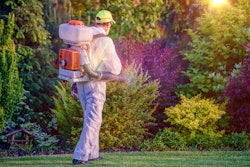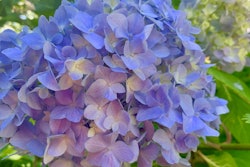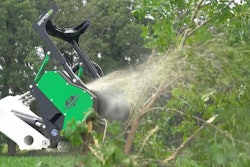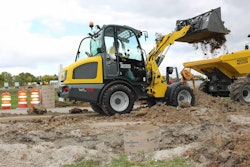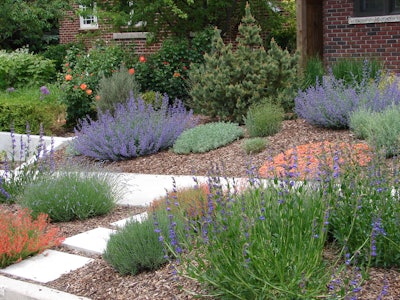
For customers desiring a landscape that’s beautiful while also helping conserve water, xeriscaping could be the answer. According to Xeriscapes Unlimited based in Phoenix, Arizona, xeriscaping is a landscaping method developed for arid and semi-arid climates that utilize water-conserving techniques, careful selection of drought-tolerant plants, the practice of plant groupings, mulch and efficient irrigation.
When xeriscaped, landscapes will need little to no water beyond what’s naturally provided, as this practice reduces or eliminates the need for irrigation.
Incorporating xeriscape ideas into a client’s landscape can not only save water, but it can add diversity and interest, so take a look at a few methods you can implement to give your customers the xeriscape of their dreams.
What is xeriscaping?
Commonly mistaken for “zeroscaping” because of the pronunciation similarities, which could signify that there are zero to minimal landscaping elements present, xeriscaping does not mean that the landscape is devoid of plant life.
According to National Geographic, the most environmental aspect of xeriscaping is making sure you choose the right type of vegetation that fits the climate.
Like most people who hear the term xeriscaping, your customer might be under the impression that they will only be able to have desert-like plants or cacti in their yard if they want to conserve water, but that isn’t the case.
On the contrary, in climates that are non-desert, xeriscaping can actually give you the chance to use a fairly wide variety of plants and planting practices that can still help your customers save water.
“Xeriscaping often means replacing grassy lawns with soil, rocks, mulch and drought-tolerant native plant species,” National Geographic says online. “Trees such as myrtles and flowers such as daffodils are drought-tolerant plants.”
Other plants that fit well into a xeriscaped yard are agave, juniper, lavender and herbs such as thyme, sage and oregano.
Another important aspect of xeriscaping is making sure the irrigation that is needed is efficient, and grouping similar plants together in the space can help ensure efficient irrigation is achieved.
“Drips and soaker hoses direct water directly to the base of the plant and prevent the water evaporation that sprinklers allow,” National Geographic says online. “A xeriscaped landscape needs less maintenance than an area landscaped with grass and water-intensive plants.”
Adding xeriscape landscaping services
According to Xeriscapes Unlimited, there are seven key principles to keep in mind when creating a xeriscape:
- Good landscape designing and planning
- Appropriate turf areas
- Efficient irrigation systems
- Use of soil amendments
- Use of mulches
- Incorporation of low-water-use plants
- Appropriate and professional maintenance services of plants and irrigation systems
Experts at Xeriscapes Unlimited agree that xeriscaping has multiple benefits, such as lowering your customer’s monthly maintenance bill, lowering the monthly water bill, lowering or eliminating a monthly/annual fertilizer bill, lowering or eliminating a seasonal grass bill and making your customer eligible for available city xeriscape conversion rebates.
Looking at this list, you might start to think that creating a xeriscape will mean that you as a landscaper won’t really have much maintenance work to do in the long run, which could cost you money down the road, but that isn’t the case. Even though the frequency is less, a landscaper is still required to maintain xeriscaped areas.
On a typical grass-covered yard, mowing can be accomplished fairly quickly, but with a xeriscape, more time must be taken to carefully tend to the area, as this care will differ greatly from the everyday pruning and watering that accompanies a full green yard.
One big challenge with convincing clients to invest in a xeriscape is the price point, as Xeriscapes Unlimited says that a cost per square foot can be approximately $2-$5 depending on what features your customer wants to add.
Reducing turfgrass and using xeriscape plants
One common practice with xeriscaping is cutting back on the amount of turfgrass that’s present, as this can also significantly help with water conservation. Certain grass types require less water than others.
When working on a xeriscape landscape design, it’s not necessarily a good idea to completely eradicate the turf but instead simply reduce the turf.
Turf reduction can help clients save a good deal of water but still give them the overall concept of a lush, green lawn. One common mistake that accompanies xeriscaping is the turf not being cared for after xeriscaping has taken place. Also, keep in mind that the irrigation system doesn’t always have to be changed to a drip system when creating a xeriscape. While it’s true that you can create hydrozones of plants that will boost water conservation, avoiding small patches of grass that require frequent watering is also a good idea.
Talk to your customer about reducing the size of their lawn by adding in beds that contain plants that will use low amounts of water, and add in some pathways, pavers and other hardscapes that will be able to add back some visual interest to the space where grass used to be.
Using xeriscape plants is also highly recommended, as these native plants are already adapted to the local climate and will require less additional water.
Some customers might not particularly enjoy the idea of having native plants in their xeriscape, as they may be partial to other exotic plants that aren’t necessarily fit for their soil type and USDA Hardiness Zone, so take note of what plants they do and don’t like.
Once you have an idea of what plants they want in their yard, try and find native plants that are similar in look that might be able to fit the theme your customer wants while still contributing to water conservation.
Native plants are also attractive to birds and other wildlife and reduce the need for pesticides and chemicals, which should be a plus for your customer.
Drought-tolerant plant options
When choosing plants to include in a xeriscape, native and drought-tolerant plants are the way to go, as they will match the environmental variables of the landscape. As a starting point, take a look at a few suggestions you can present to your customers:
Trees:
Prosopsis chilensis (Chilean Mesquite)
Lagerstromia species (Crape Myrtle)
Acacia stenophylla (Shoestring Acacia)
Geijera parviflora (Australian Willow)
Shrubs:
Cistus species (Rockrose)
Dondonea viscosa ‘Altropurpurea’ (Purple Hopseed Bush)
Lantana montevidensis varieties
Lavendula species (Lavender)
Leptospermum scoparium varieties (Australian Tea Tree)
Vines:
Bignonia cherere (Red Trumpet Vine)
Bougainvillea varieties
Color:
Arctotis
Erigeron
Osteospermum
Cerastium
Groundcover:
Gazania
Thymus varieties (Thyme)
Iceplant – many varieties and species
Polygonum (Pink Clover)


